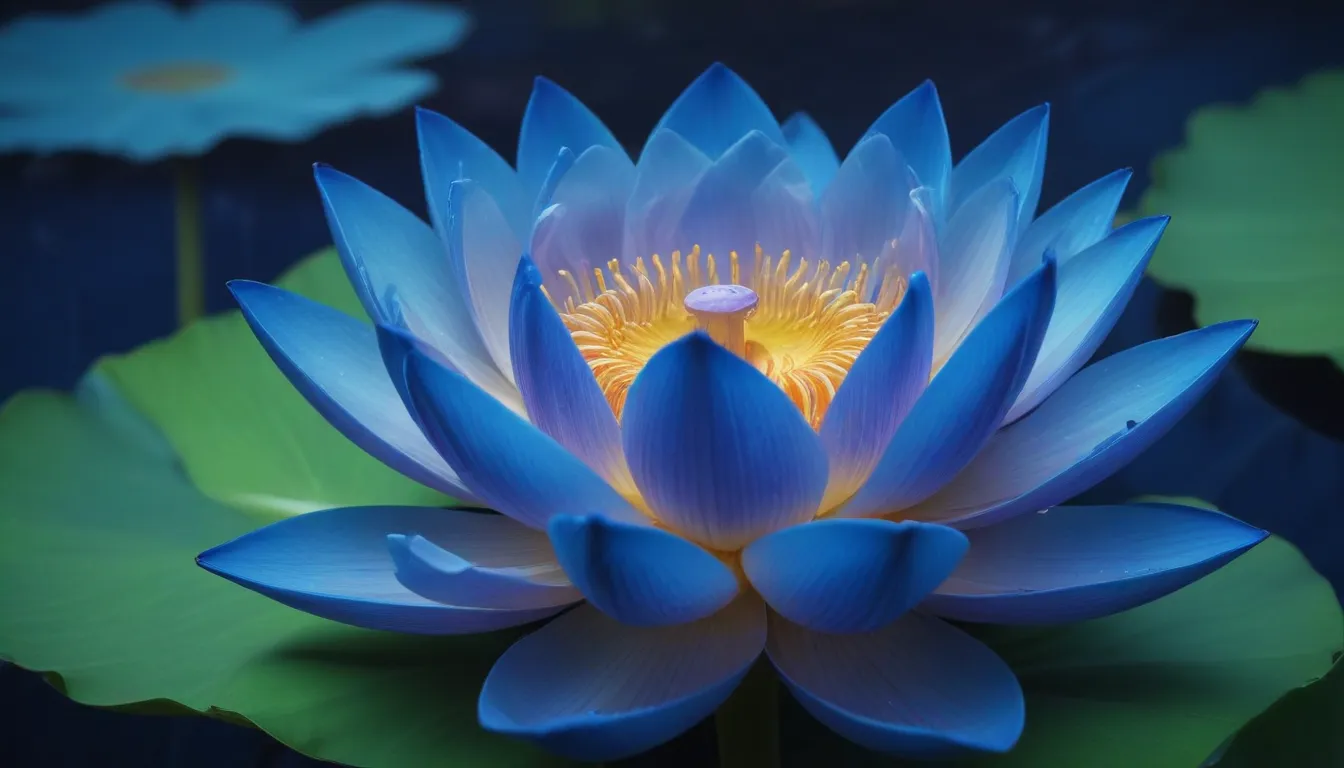
The blue lotus flower, also known as Nymphaea caerulea, is a beautiful and enigmatic plant that has captivated humans for centuries. Its mystical properties and spiritual significance have been the subject of fascination in various cultures around the world. In this guide, we will explore the spiritual meaning of the blue lotus flower, its history, symbolism, and how it can be incorporated into your spiritual practice.
History and Origin of Blue Lotus Flower
The blue lotus flower is native to Egypt, India, and parts of Asia, where it has been cultivated for thousands of years. It is believed that the ancient Egyptians held the blue lotus in high regard, using it for both medicinal and spiritual purposes. The flower was often associated with the goddess Isis, who was said to have opened her eyes after being weaned on the milk from a blue lotus bud.
In India, the blue lotus has been used in Hinduism and Buddhism as a symbol of purity, enlightenment, and spiritual awakening. It is also associated with Lord Krishna and is often depicted holding the flower or wearing it in his hair.
Symbolism of Blue Lotus Flower
The blue lotus flower holds several layers of symbolism in various cultures:
-
Rebirth and Transformation: The blue lotus flower is often associated with rebirth and transformation, as its petals close at night and open again at dawn, symbolizing the cycle of life and death. In Buddhism, this is particularly significant, as it represents the process of enlightenment and spiritual growth.
-
Beauty and Elegance: The blue lotus flower is known for its stunning beauty and grace, which has made it a popular symbol of elegance and refinement in many cultures. Its large, fragrant blooms are often used in art, literature, and poetry as a representation of pure and unadulterated beauty.
-
Spiritual Enlightenment: The blue lotus flower is considered a powerful tool for spiritual growth and awakening. Its deep blue color represents the journey towards enlightenment, while its large petals symbolize the opening of one’s heart and mind to receive divine wisdom.
-
Protection and Purification: In ancient Egypt, the blue lotus flower was believed to protect against evil spirits and negative energies. It was also used in religious ceremonies for purification and spiritual cleansing.
How to Use Blue Lotus Flower in Your Spiritual Practice
The blue lotus flower can be incorporated into various spiritual practices, such as meditation, ritual work, and energy healing:
-
Meditation: When meditating with the blue lotus flower, focus on its symbolism of beauty, enlightenment, and transformation. Imagine yourself opening your heart to receive divine wisdom, just like the petals of the blue lotus unfurling in the light.
-
Ritual Work: Incorporate the blue lotus flower into your spiritual rituals as a symbol of purification and protection. You can use it in altar arrangements, baths, or anointing oils to create a sacred space for your work.
-
Energy Healing: The blue lotus flower is said to have powerful healing properties that can help balance the chakras and promote emotional well-being. Place a blue lotus flower essence or oil on your third eye chakra (between your eyebrows) to promote spiritual growth and enlightenment.
Conclusion
The blue lotus flower is a captivating and powerful symbol in various spiritual traditions, representing beauty, enlightenment, and transformation. By understanding its history, symbolism, and incorporating it into your spiritual practice, you can harness the power of this majestic flower to deepen your connection with the divine and embrace personal growth.





